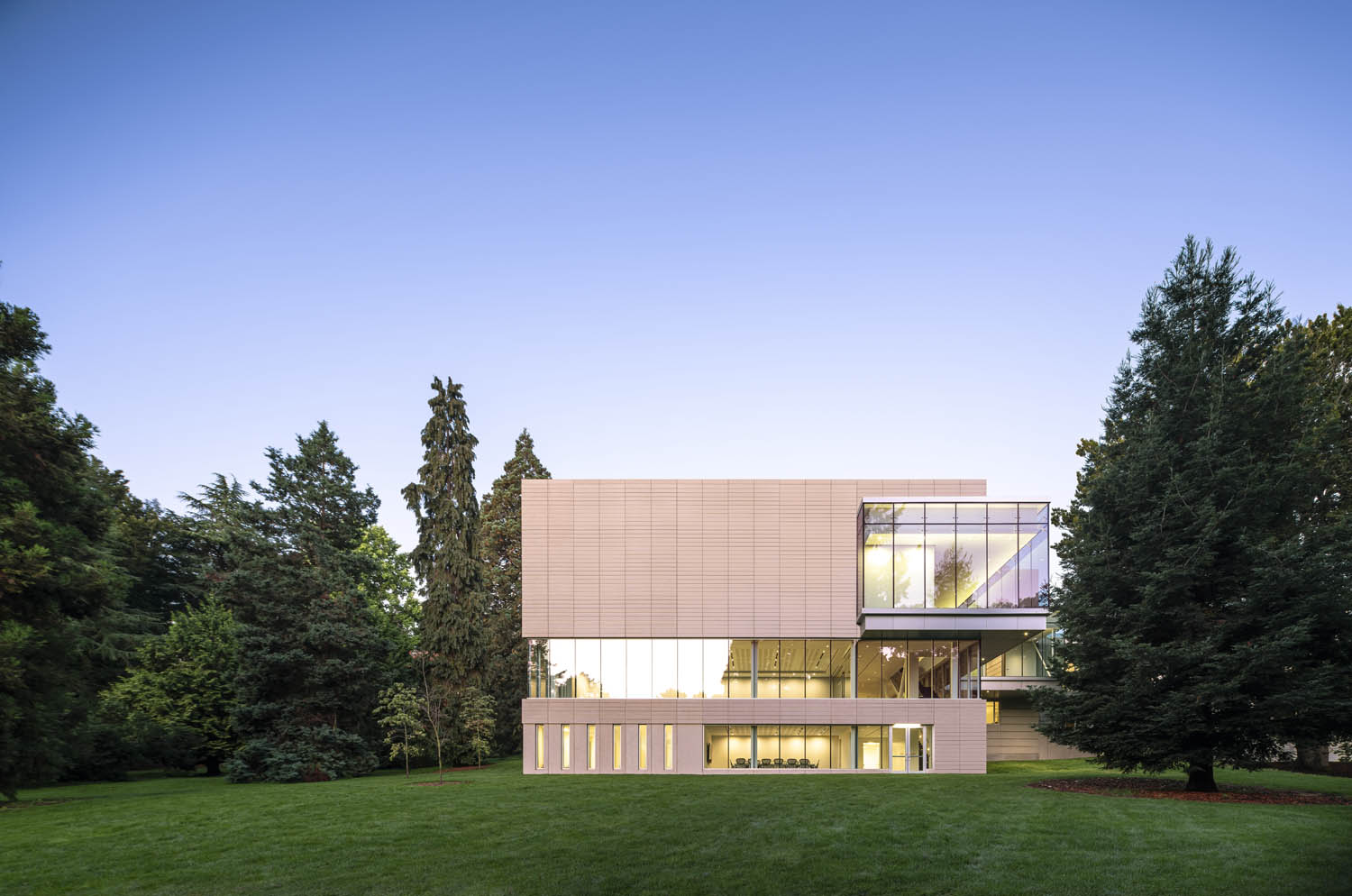
November 12, 2019
Pacific Rim Calling: Seattle’s Asian Art Museum Gets a Revamp
The renovation, undertaken by local firm LMN Architects, had to reconcile contemporary requirements with the museum’s landmarked features.

In February 2020, Seattle will see one of its most beloved architectural monuments reopen. The Asian Art Museum, which occupies a 1933 Art Deco treasure in the Olmstead-designed Volunteer Park, was for decades in dire need of renovations to gallery and conservation space. Seattle Art Museum, whose portfolio includes the Asian Art Museum, hired local firm LMN Architects to restore the historic stone-and-concrete facade, streamline existing exhibition spaces, and add a 2,648-square-foot gallery.
“Our approach was to make something that was compatible but clearly distinguishable as a new addition,” said LMN partner Wendy Pautz.

The new curtain-walled addition, which comprises sandstone, lime-based plaster, concrete, and structural steel, faced a challenging site in the middle of popular Volunteer Park. “This is a building that has four front sides,” Pautz said. To that end, LMN suspended the addition’s new lobby above the park—thus indicating that it was not a public entrance into the museum—while creating enough transparency to engage passersby in one of the city’s most beloved green spaces.
Striking that balance seems to have proved pleasing for the client: “The new openings in the Fuller Garden Court bring the beauty of historic Volunteer Park into the space and create an entirely new way to circulate through the galleries,” said Seattle Art Museum Director and CEO Amada Cruz. The Volunteer Park location was the museum’s original home before it moved to a Robert Venturi building downtown in 1993.

LMN also had to reconcile contemporary museum requirements with the landmarked aspects of the early 20th century highlight designed by Seattle architectural partners Bebb and Gould. For example, the building originally had natural skylights, a no-no under today’s art conservation standards. Before the renovation, those skylights were crudely covered over. Now, adjustable and reversible LED lightboxes conform to landmark guidelines while adequately illuminating the space.
“We were able to renew the use of those skylights in a way that people can experience the building as originally envisioned without compromising on potential impact to the art,” said LMN partner Sam Miller.

LMN also unveiled a slew of back-of-house features, including a glass wall for visitors to observe art professionals at work in the new conservation studio—a growing trend in museums to increase transparency and public engagement. That studio is now the largest west of the Mississippi that is dedicated to Asian art—a focus that has specific requirements like tatami mat floors and specially-designed pedestals for rolling out scrolls.
“There’s a lot that the visitor can’t see that is just as important: all the infrastructure that makes this historic jewel a thoroughly modern museum, equipped to safely display delicate artworks,” Cruz said. “The reimagined building will allow us to better fulfill our mission to connect visitors to the art and cultures of Asia.”
You may also enjoy “Ottoman Architecture Inspires Kengo Kuma’s Contemporary Art Museum in Turkey”
Would you like to comment on this article? Send your thoughts to: [email protected]











